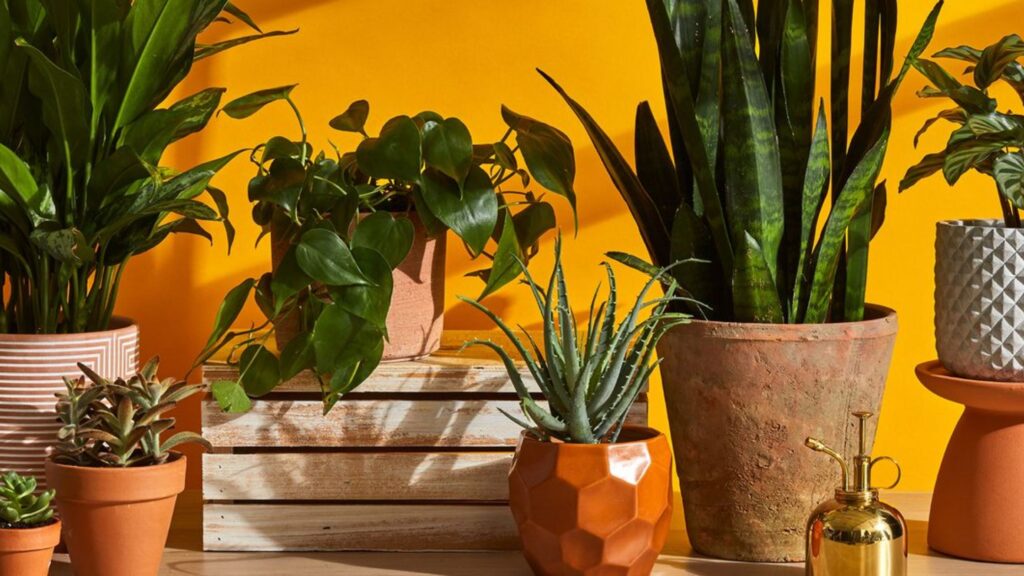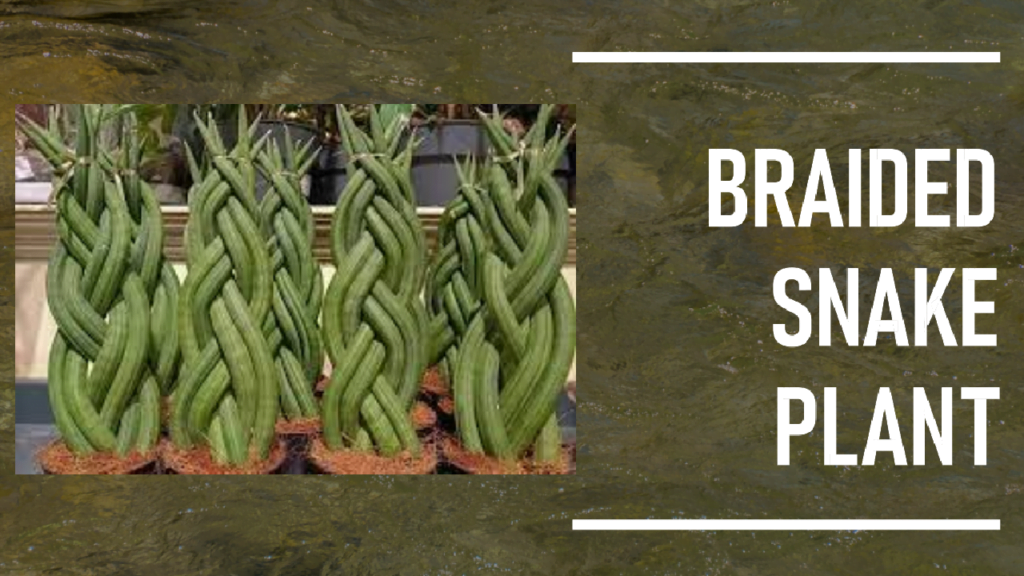Want to start gardening, but your lack of a green thumb is holding you back? A beginner’s biggest misconception is that they need to have a green thumb to grow indoor plants. However, this is not true!
Despite the fact that indoor plants need proper care, some of them are pretty easy to grow. To help you grow your first green friend, I’m sharing with you 15 indoor plants for beginners.
The indoor plants that I have picked are the most forgiving and easy to grow indoor plants. Even if you occasionally missed their caring need, they will forgive you. Thus, their forgiving nature makes them great starter plants for any novice.
Also, there’s no need to be an expert to grow these beginner indoor plants. In this post, I’ll share some quick care tips. It won’t take you long to have your own mini garden if you follow the care tips for each plant.
With that said, let’s explore the best indoor plants for beginners.
Which indoor plants are the best for beginners?
Low-maintenance indoor plants are best for beginners. With low-maintenance indoor plants, you can have green beauty with minimal effort. Also, they are quite adaptable by nature. Some of the most popular low-maintenance indoor plants are snake plants, spider plants, and money plants.
Hence, low-maintenance plants are the perfect choice for beginners. As low-care indoors plants are simple to grow and need little maintenance. And I’m sure you will appreciate a plant that looks great without asking your much time and attention.
There are lots of low-maintenance indoor plants for beginners. Yet, I have chosen the easiest indoor plant to grow. The following indoor plants are not only easy to grow but they are aesthetically pleasing as well. Also, they are sure to improve your indoor air quality.
Top 15 Indoor plants for beginners
Don’t worry if you are new to indoor gardening. I understand it can be tough to know where to start. Hence, I have picked the best indoor beginner-friendly plants for you. The following indoor plants are easy to care for and perfect for beginners.
1. Snake Plant

One of the popular beginner-friendly plants is the indoor snake plant. Apart from being easy to maintain they purify indoor air. You will appreciate the snake plant’s striking appearance and low light tolerance. The hard-to-kill quality makes snake plants top the list of indoor plants for beginners.
2. Aloe vera

Looking for a plant that gives you medicinal benefits and needs little maintenance? In my opinion, there is nothing better than aloe vera. This succulent looks great in any home, and it also has a gel that soothes minor burns and cuts.
3. Golden Pothos

This trailing plant makes an excellent choice for beginners who want a lush, easy-to-maintain plant. It has vibrant green leaves and can thrive in low light, making it a popular choice for adding natural beauty.
4. Hindu Rope Plant (Hoya Carnosa Compacta)
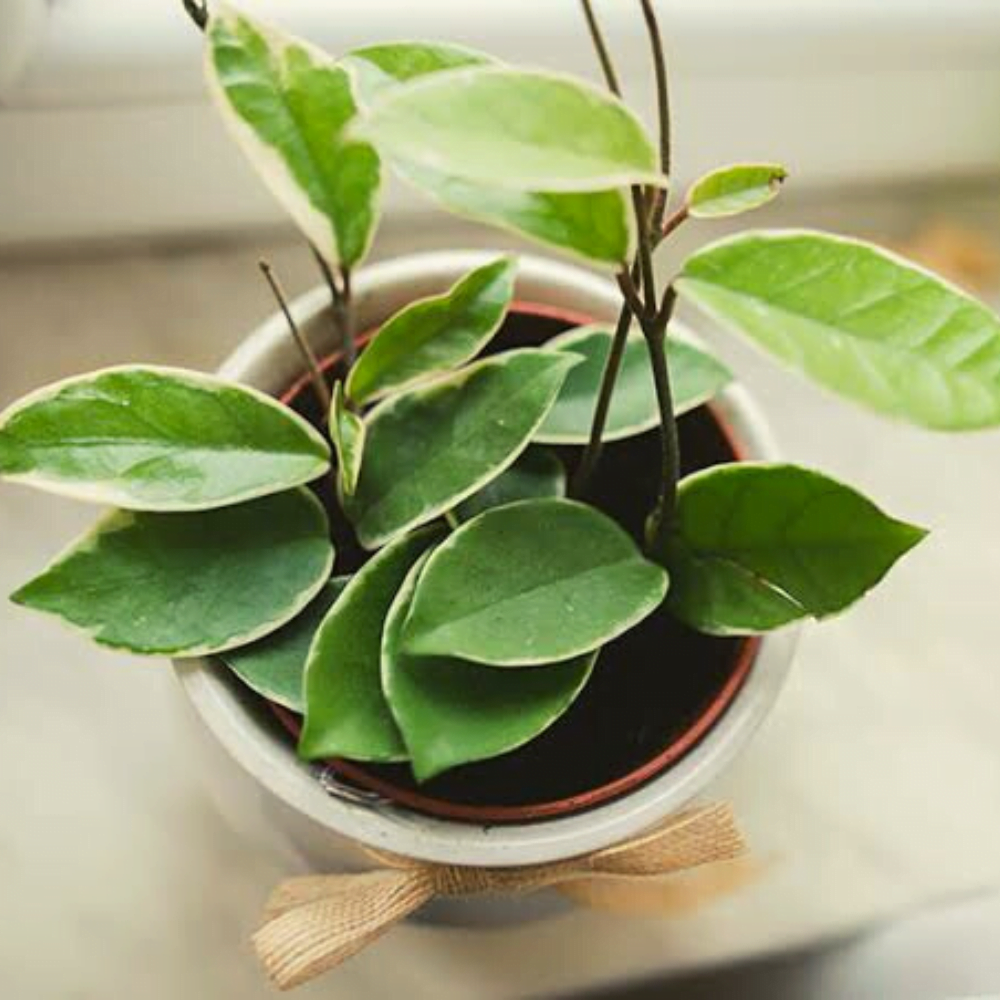
Introducing Hoya Carnosa compacta! A plant that needs little care and has a unique beauty. With long rope-like vines with thick, twisted, and bright green leaves it is sure to add a touch of beauty. You get to enjoy pink star-shaped flower clusters.
5. Flaming Katy Houseplant (Kalanchoe Blossfeldiana)

Flaming Katys are popular among beginners because of how pretty they are. It’s got a lot of long-lasting blooms. There can be up to 50 flowers on a flower head.
6. Jade Plant (Crassula Ovata)
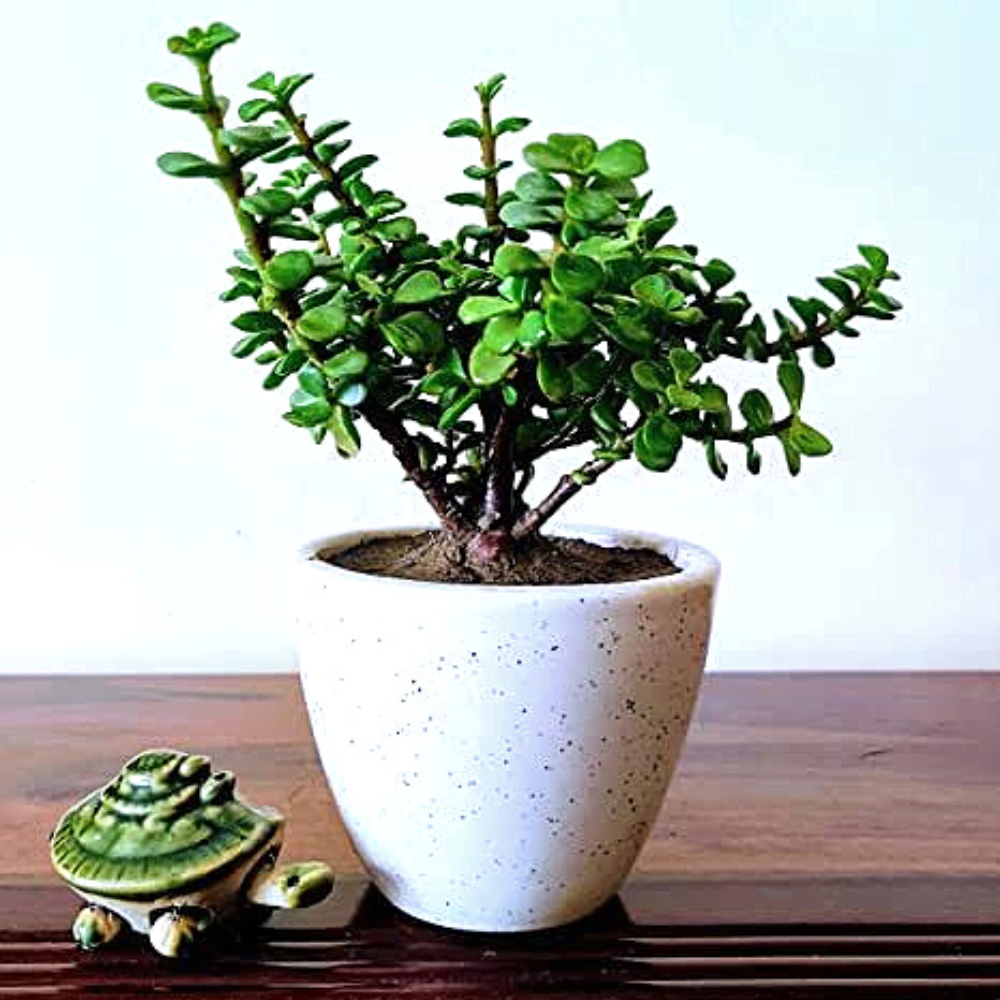
Besides the thick, waxy oval leaves, jade plants have a strong, woody stalk. It’s easy to grow and doesn’t need much care, so it’s perfect for beginners.
7. English Ivy (Hedera Helix)
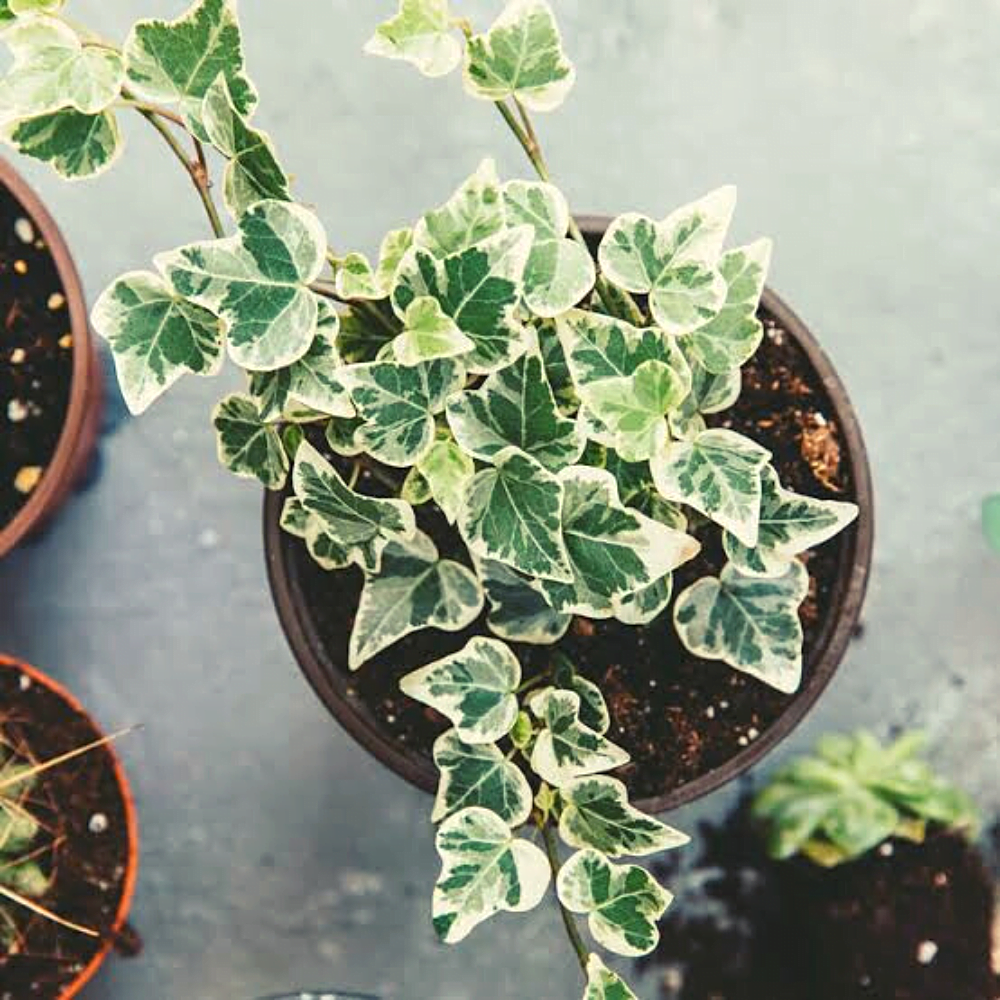
There is nothing more beautiful than trailing English ivy. The leaves have thick, glossy, and dark green with white, yellow, or light green veins. English ivy looks great as hanging plants. You can enhance the look of this plant by placing it on a high shelf.
8. False Shamrock / Purple Shamrock (Oxalis Triangularis)
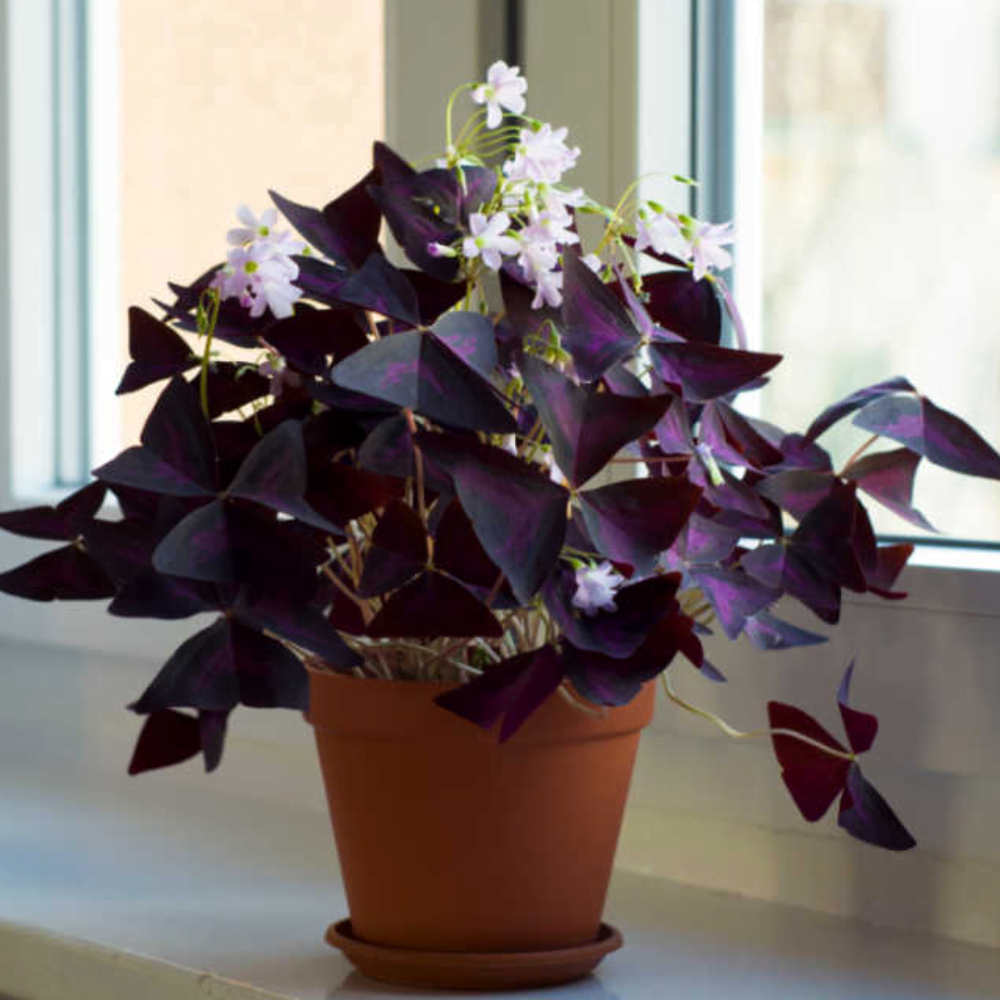
False Shamrocks are delicately shaped plants that stand barely six inches tall when fully grown. The blossoms are star-shaped and white/light pink in color. A clover-shaped bloom contrasts with deep purple leaves. At night, the leaves and blooms close like an umbrella.
9. Heartleaf Philodendron

One of the easiest indoor plants to maintain is the Heartleaf Philodendron, also known as the Sweetheart Plant, and it makes a great first houseplant. A high natural shine is present on its dark green, heart-shaped leaf. Excellent hanging or tabletop plants.
10. Air Plants
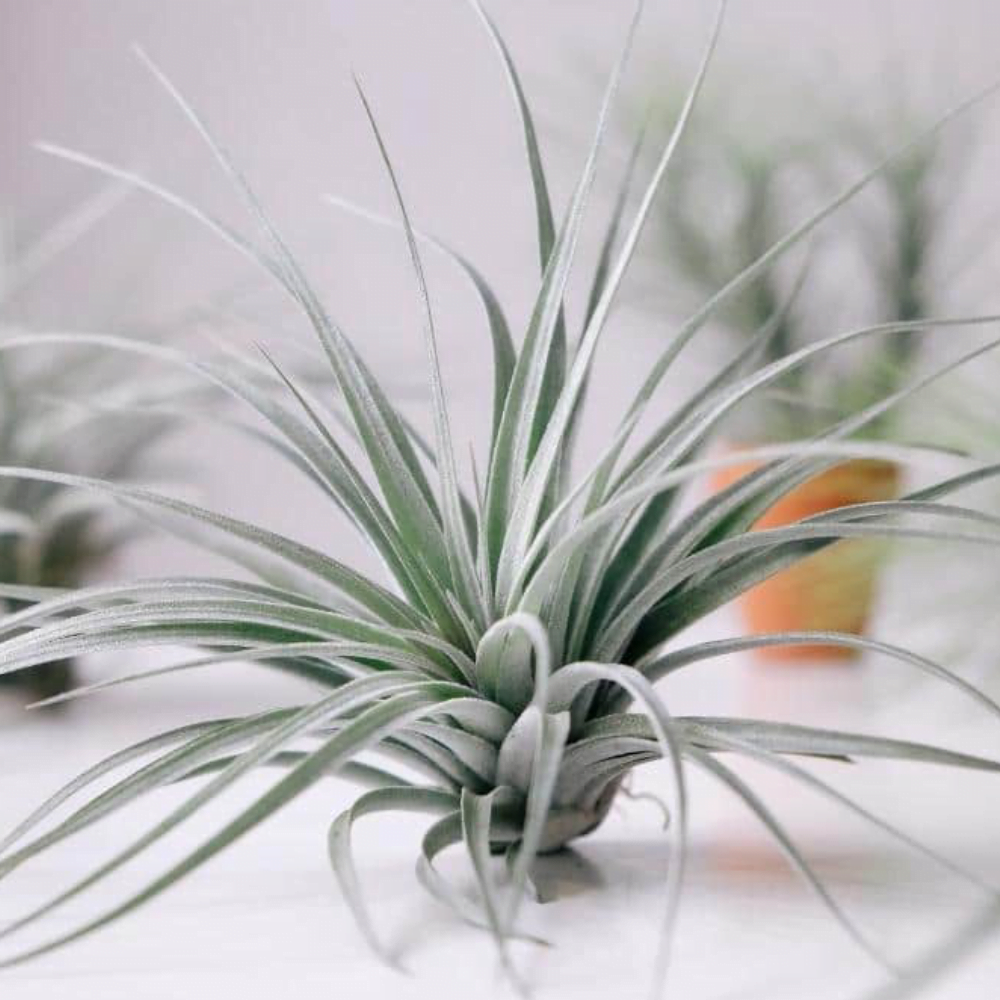
An indoor plant that grows and thrives without soil is a great option for the beginner. You get more than 600 varieties in Air plants. These plants naturally grow on trees, shrubs, rocks, and the ground. A silver-leafed air plant is drought-resistant, while a green air plant dries out more quickly.
11. Zebra Plant (Haworthiopsis Fasciata)
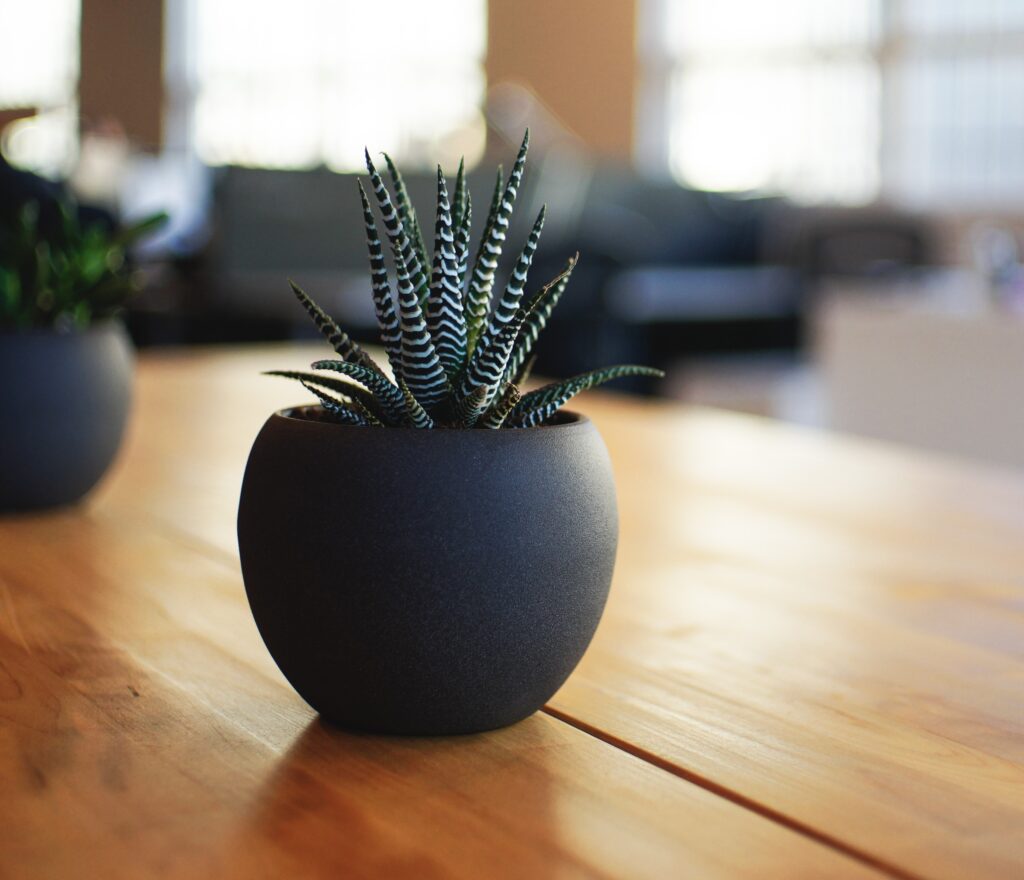
Those who want to start slowly should look for the Zebra Plant, Haworthiopsis Fasciata (formerly Haworthia fasciata). Succulents like this one are native to Brazil, and they make juicy, glossy green rosette leaves.
12. Money Tree Plant (Pachira Aquatica)
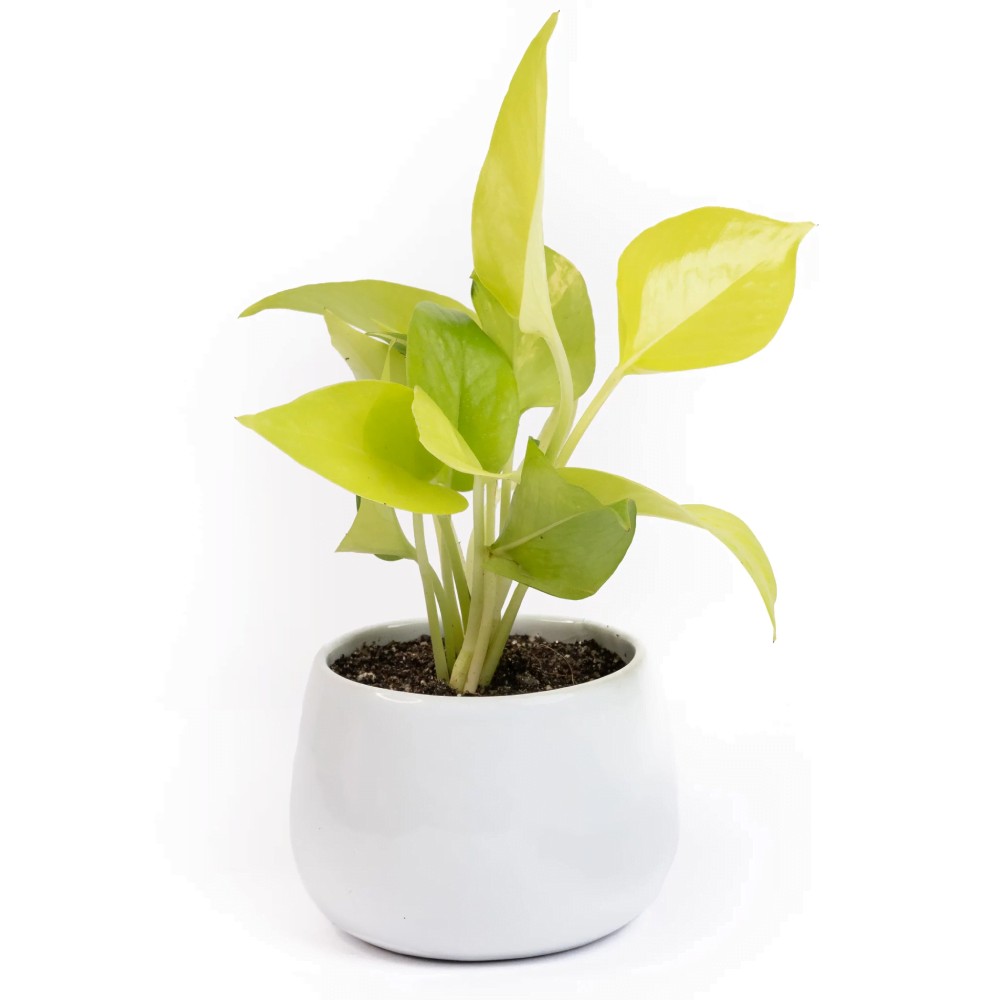
For those seeking an easy-growing, low-maintenance plant, the money tree plant is a good choice. Some people consider it to be lucky and prosperous, while others just adore it for its oddball appearance. Its leaves are vibrant green in color and its trunk has an unusual braided pattern.
Unfortunately, much to the dismay of many, the trunk is not braided by nature. Typically, when the plant is young and tender, this is done by hand.
13. Chinese Money Plant (Pilea Peperomioides)

Pilea Peperomioides, also known as the Chinese Money Plant, make a great desk or shelf plant. It usually grows only 10 to 12 inches high. Its rarity is not due to the plant’s care in cultivation; in fact, it requires little maintenance.
14. ZZ Plant (Zamioculcas Zamifolia)

ZZ Plants are tough, with waxy, smooth, shiny, pointed, dark green leaves. It has tiny, delicate white flowers and never gets taller than 3 feet. The ZZ Plant is a fantastic option for novices seeking an extremely hardy house plant.
15. Fiddle Leaf Fig (Ficus Lyrata)
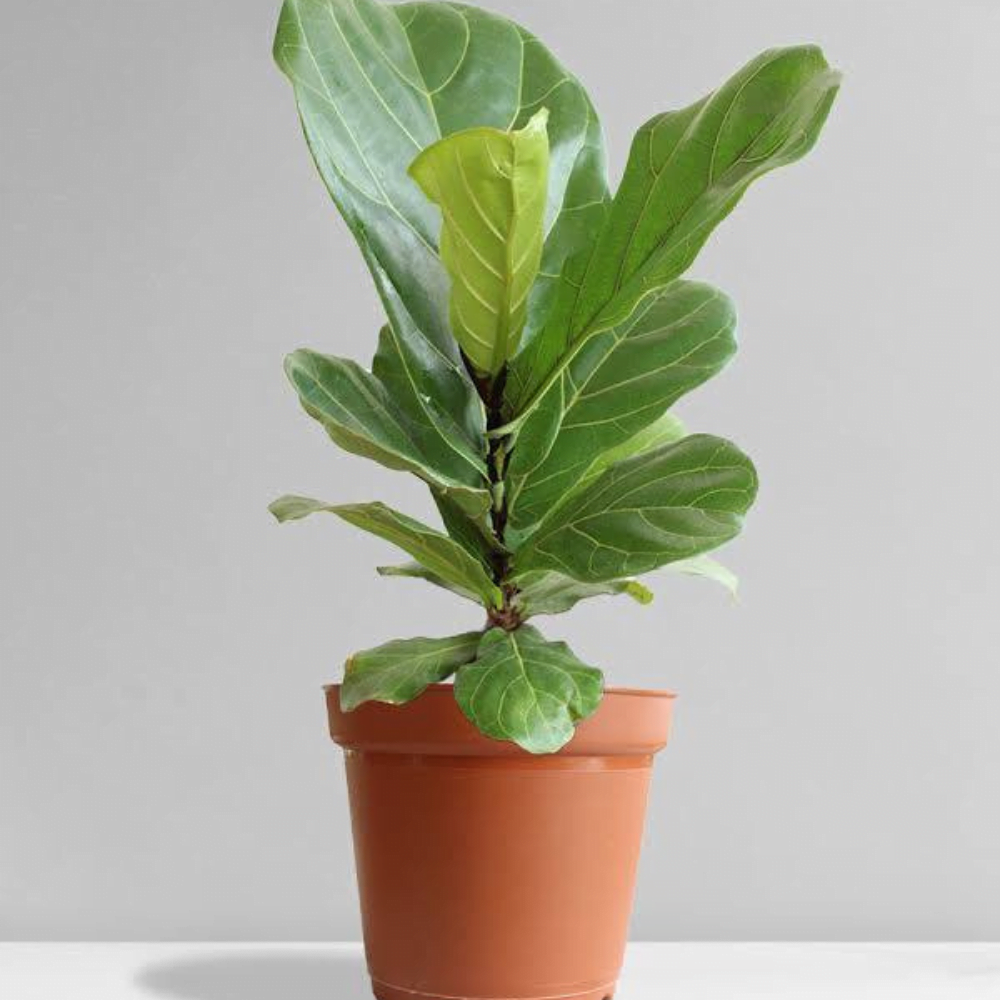
It is a fashionable houseplant that has been featured in several magazines dedicated to modern interior design. Despite not becoming particularly bushy, this plant grows tall and columnar. It makes an interesting filler for corners and small spaces. It gets its name from the large, waxy, dark green leaves that resemble violins.
16. Wandering Jew Plant (Tradescantia Zebrina)

The Wandering Jew is a fantastic indoor plant for beginners mainly because it is said to be “tough to kill.” This lovely plant features striped leaves with growth visible on the top. Younger growth is indicated by green growth, while older growth is indicated by purple growth.
There’s all I got! Start with the above plants if you’re just getting started. There’s no need to worry about these indoor novice plants because they’re forgiving and adaptable. Now let’s talk about how to care for these beginner-friendly plants.
Best Indoor Plants for Beginners
1. Snake Plant

Snake plants, also known as mother-in-law’s tongues, get their name from their structural, slithery leaves. It can survive without water for up to three weeks in dry, rocky habitats. This makes it one of the best indoor plants for beginners.
Just make sure it’s near a bright, indirect window and away from drafts since it doesn’t like the cold.
As it doesn’t grow too fast, the snake plant is great if you live in a small space. It will also require less repotting, saving you some time and headaches.
In order of care, from 1 (easiest) to 5 (hardest): 1
2. Aloe vera
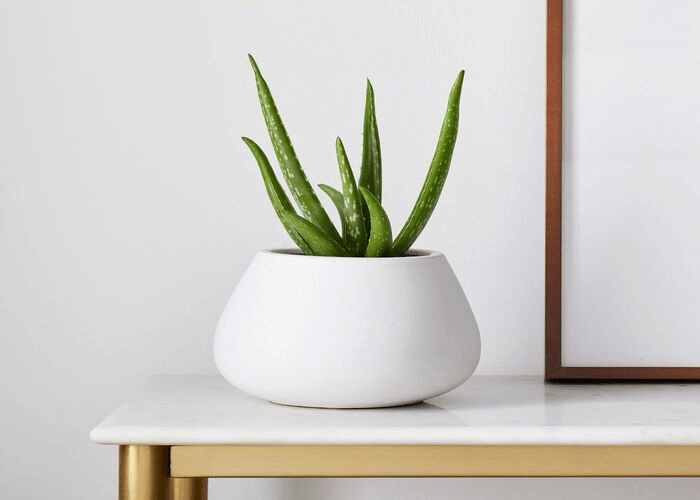
Plants like aloe vera are easy to keep. In spring and summer, this hearty succulent grows more vigorously.
Since aloe is a succulent, it can handle drought quite well. So don’t worry about forgetting to water it. When you water it, the long, narrow, sword-like leaves will plump back up. Also, it doesn’t need much fertilizer.
Be sure to put it by a window that gets bright, indirect light. It needs to drain well both in its container and in its soil.
In order of care, from 1 (easiest) to 5 (hardest): 2
3. Golden Pothos
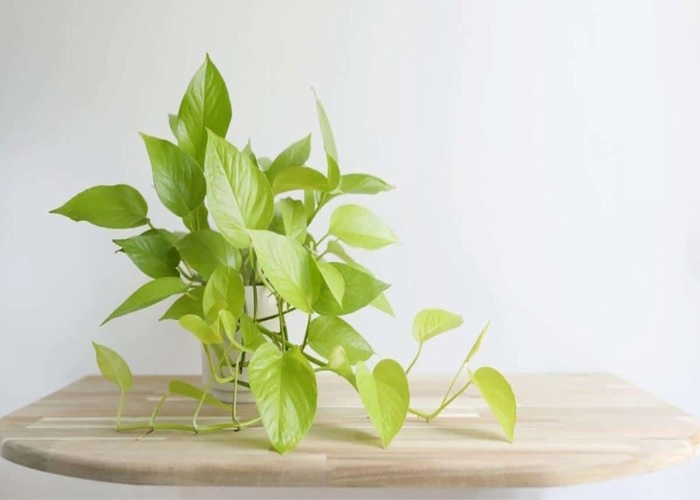
Many reasons make them good indoor house plants, including how easy they are to care for, how beautiful they are, and how easy they are to propagate! Plants like the Pothos are great beginners for your houseplant journey.
The pothos vine can grow up to 20 feet long indoors and is incredibly resilient. Keep your golden pothos in good light to bring out its yellow hues, and keep an eye out for pests since its layers are a breeding ground for pests.
In order of care, from 1 (easiest) to 5 (hardest): 2
4. Hindu Rope Plant (Hoya Carnosa Compacta)

Keeping it in the same pot for years makes Hoya a great first house plant as it doesn’t mind a little root rot.
Simply fertilize the plant in the growing seasons (summer and spring), and make sure it is planted in perlite-added fast-draining soil as they are extremely sensitive to overwatering.
The Hoya Carnosa Compacta needs light, but it prefers diffused sunlight or artificial light. Place the plant nearby, away from direct sunlight, rather than in the window. Sunlight can dry out and burn leaves. This plant is a good option when choosing houseplants for beginners.
In order of care, from 1 (easiest) to 5 (hardest): 2
5. Flaming Katy Houseplant (Kalanchoe Blossfeldiana)

As a gift plant, Flaming Katy is always popular. Depending on the season, the blossoms might be yellow, lilac, orange, or red. There are usually thick, meaty, waxy leaves this succulent plants.
Although the leaves are fragile, the plant is fairly easy to maintain. During flowering, it is important to keep the soil moist.
Water the plant again once the soil has dried. When watering, it is important to maintain a careful balance. It prefers moist soil, but excessive moisture can lead to root rot, yellow leaves, and leaf drop.
In order of care, from 1 (easiest) to 5 (hardest): 2
6. Jade Plant (Crassula Ovata)

Indoor-grown jade plants don’t get very large. A well-drained soil with partial or indirect sunlight is ideal for this plant. All-purpose potting soil with perlite added will help the plant thrive.
Jade Plants prefer a warm, dry environment, although they aren’t as tolerant of drought as other succulents are. During the growing seasons of spring and summer, these plants require moist soil (not wet soil).
Jade Plants should be kept in warm rooms, away from air conditioners, as they are particularly sensitive to cold.
In order of care, from 1 (easiest) to 5 (hardest): 1
7. English Ivy (Hedera Helix)

Ivy grows best in direct, strong sunlight with little water. After the soil has dried out at least two inches below the surface, the English Ivy should not be watered.
It is recommended that you use nitrogen-rich fertilizer only once a month in spring and summer, and the soil needs to be well-draining.
If the English ivy isn’t growing, keep an eye on it because dust and bugs can get attracted to it.
Unfortunately, the plant is toxic to kids and animals, even though both find it lovely (kids and pets like to play with the hanging leaves).
In order of care, from 1 (easiest) to 5 (hardest): 2
8. False Shamrock / Purple Shamrock (Oxalis Triangularis)

Oxalis triangularis doesn’t care what kind of light it gets. Any indirect, bright light source will do. Make sure the top inch of the soil is dry before watering.
This plant is great for beginners who forget to water because it’s foliage withers during dry spells, leaving the bulb below dormant until it’s watered again. After that, it’ll start growing again.
In order of care, from 1 (easiest) to 5 (hardest): 3
9. Heartleaf Philodendron
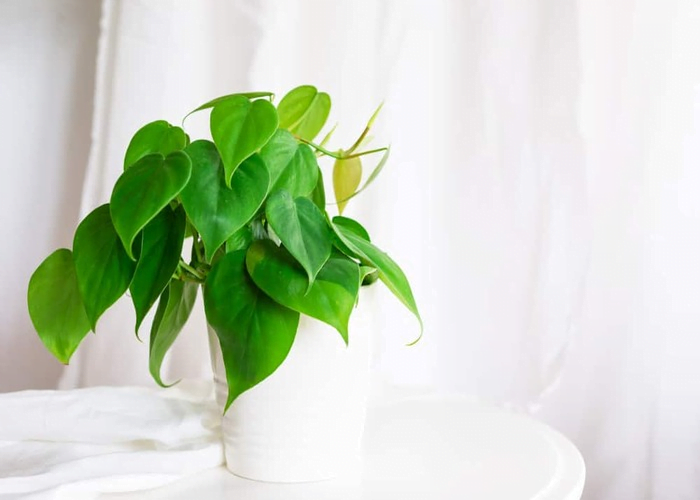
The Heartleaf Philodendron doesn’t need a lot of indirect light, and its soil doesn’t need to be watered often. Weekly watering is all Heartleaf Philodendrons need.
The plant is easy to grow if you put it in a good potting medium and fertilize it every six to eight weeks.
The only thing newcomers should be on the lookout for is little leaves or little new growth, which often indicate that some fertilizer is needed.
Despite having a nice appearance and growing well, this resilient plant is toxic to both children and animals. Therefore, try to place the plant on a table or shelf where both of them cannot reach it.
In order of care, from 1 (easiest) to 5 (hardest): 2
10. Air Plants
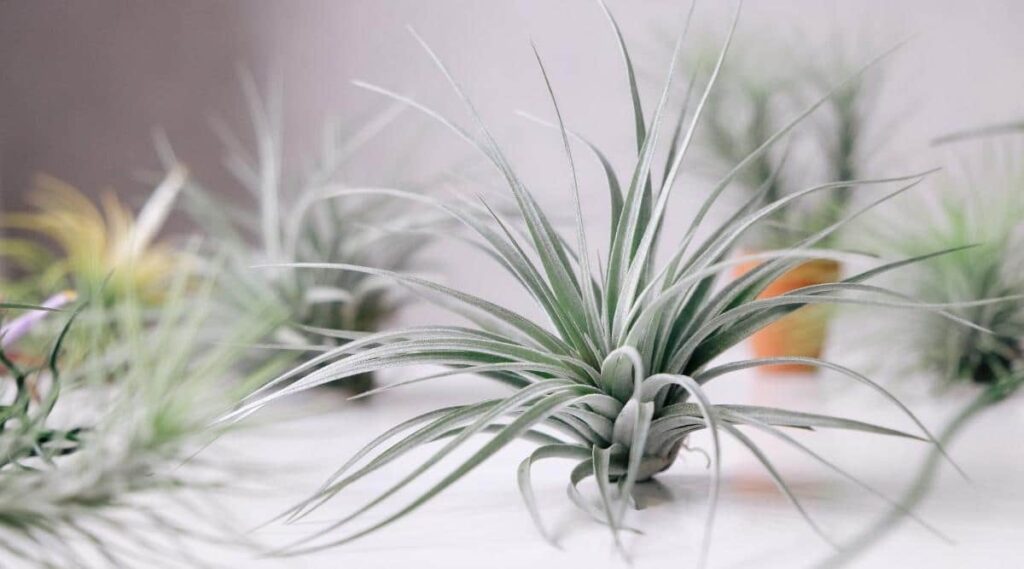
Due to their requirement for adequate air circulation and ventilation, air plants thrive in hallways and places where people go in and out often. The only thing they need is watering once a week, which can be accomplished by soaking them for a short time.
As they are sensitive to the sun, they prefer moist, shaded conditions. Avoid direct sunlight when placing your air plant.
A few good air plants to start with are Tillandsia Lonantha Scaposa, Tillandsia Lonantha Guatemalan, Tillandsia Lonantha Fuego, and Tillandsia Argentea Thin.
In order of care, from 1 (easiest) to 5 (hardest): 2
11. Zebra Plant (Haworthiopsis Fasciata)
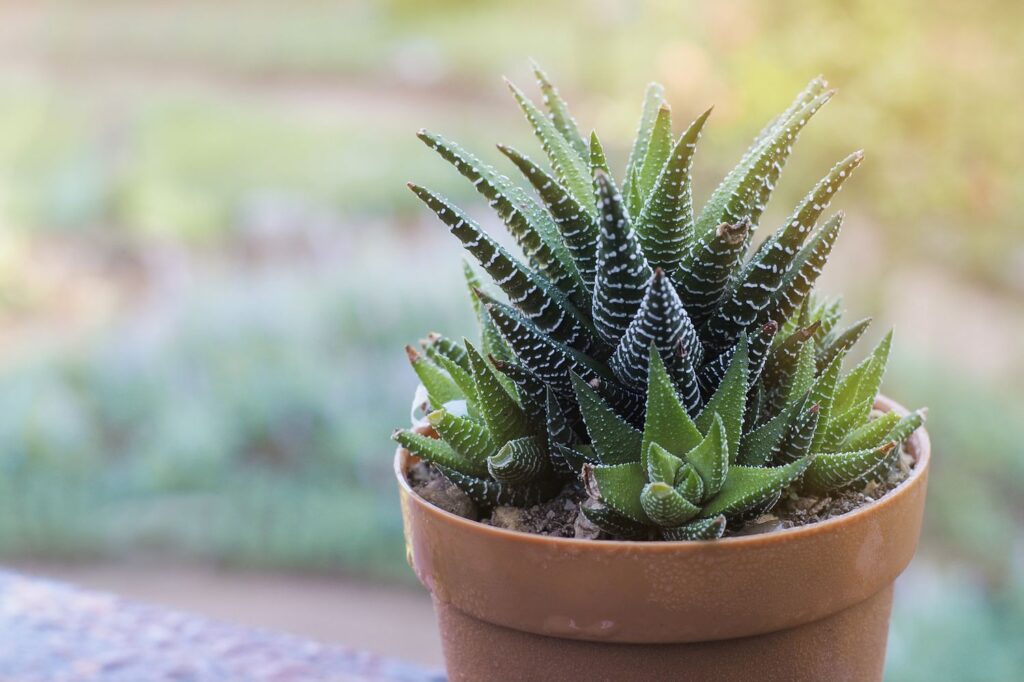
It gets its name from its white bands and warts. There’s nothing complicated about growing Zebra Plants. The only thing it needs is moisture and direct, intense sunlight. Once the soil is partly dry, water the plant.
Getting too much sun makes the leaves white or yellow. If the color fades, the leaves need more light. As zebra plants dislike humidity, they do best in rooms with good ventilation, ideally one with a fan.
Use perlite or gravel to help the zebra plant drain quickly. It only needs fertilizer in the summer. Window sills facing east or west are ideal for Zebra Plants.
In order of care, from 1 (easiest) to 5 (hardest): 1
12. Money Tree Plant (Pachira Aquatica)

Indoors, Money Trees grow to around 6 feet tall, but in their natural environment in central South America, they can reach 60 feet. It’s best to give the money tree moderate indirect light because direct sunlight might scorch its leaves.
As for light, it’s known to do well in areas with limited light. Also, money trees do well in steamy, humid conditions, making them great bathroom plants.
Water only until the top two or three inches of the potting soil are dry. Money Trees love sandy peat-moss soil, well-draining pots, and plenty of light.
In order of care, from 1 (easiest) to 5 (hardest): 2
13. Chinese Money Plant (Pilea Peperomioides)
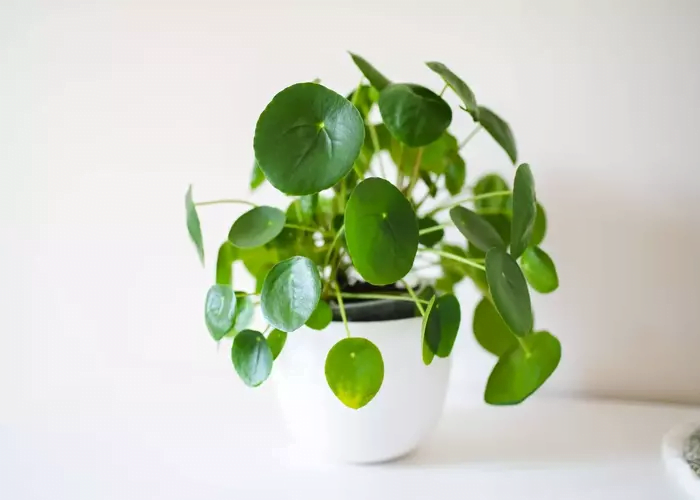
The Chinese Money Plant needs little water and well-draining soil. You just need to water it when the soil is completely dry. When the plant droops a little, you’ll know it needs watering. Just keep an eye on it.
You can grow the Chinese money plant in indirect sunlight without it wilting. You can see the leaves turning toward the sun if it’s away from direct sunlight. If you have an east or west facing window, put it there.
In regular potting soil, you can plant Pilea Peperomioides. For drainage, you can add some perlite to the growing medium.
In order of care, from 1 (easiest) to 5 (hardest): 2
14. ZZ Plant (Zamioculcas Zamifolia)

While it likes indirect sunlight and well-draining soil, it doesn’t mind dryness or low light (it’ll grow in any well-draining soil).
It only needs water until the potting soil is completely dry, so if you don’t water it until it’s completely dry, it won’t suffer.
ZZ Plants don’t need fertilizer, but you can use a water-soluble plant food in the summer. Both illness and insect infestations don’t affect the ZZ Plant.
Unfortunately, the ZZ Plant is poisonous despite its great looks. It’s best to wash your hands after handling it and keep it away from kids and pets.
In order of care, from 1 (easiest) to 5 (hardest): 1
15. Fiddle Leaf Fig (Ficus Lyrata)
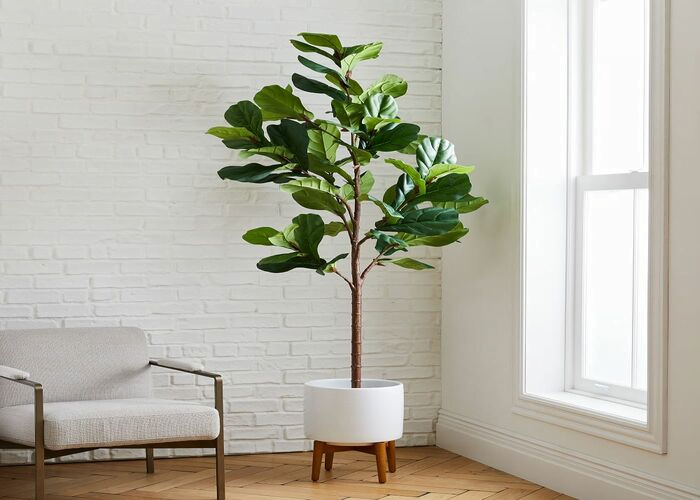
Many people think the Fiddle Leaf Fig needs a lot of maintenance. Typical homes don’t always have the right conditions for this tropical houseplant, which prefers warm, moist, and humid surroundings. However, don’t let that discourage you.
If you give it lots of water and bright, filtered light, the Fiddle Leaf Fig will blossom.
A fig plant takes a little more care than a common houseplant, but beginners can grow it.
It’s also possible for them to lose their leaves if they’re exposed to draughts, substantial temperature changes, and fluctuating humidity levels.
Despite that, Fiddle Leaf Figs are a good plant to own if you’re looking to improve your houseplant maintenance skills.
In order of care, from 1 (easiest) to 5 (hardest): 3
16. Wandering Jew Plant (Tradescantia Zebrina)
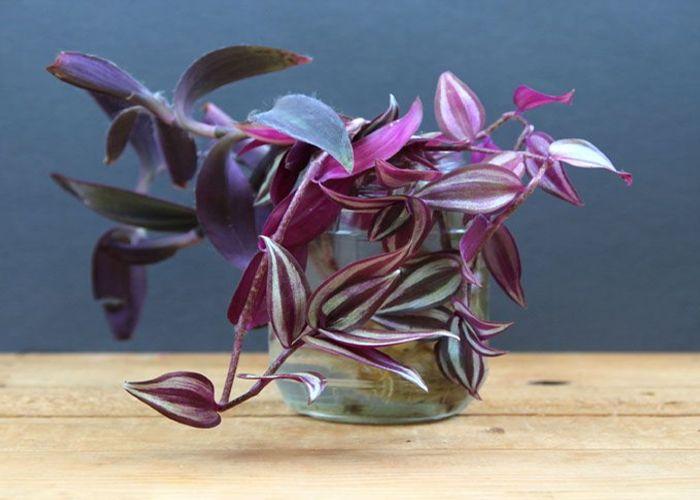
Because it cascades, you can grow the Wandering Jew on a high shelf or in a hanging basket. Moist soil and high humidity are the only requirements for this beginner-friendly plant.
If you live in a dry home, you’ll have to work harder to keep the soil moist. Use a humidity tray, group your houseplants, or buy a humidifier to keep good humidity levels.
It’s normal for the plant to become thin and scraggly as it grows. You can fix this by chopping off the tips. After a good trim, the plant can come back robust and full.
In order of care, from 1 (easiest) to 5 (hardest): 3
Conclusion
You can’t go wrong with the above list of indoor plants for beginners. Besides being pretty and charming, they also provide a lot of benefits for the house.
In addition to improving air quality, indoor plants can reduce stress levels. As a beginner, it’s good to start with easy-to-care-for plants and understand their basic needs, like lighting, watering, and soil.
It’s easy to grow and enjoy indoor plants with some effort and attention. If you’ve got a green thumb or not, add mentioned indoor plants to your home or office and enjoy their many benefits.
Related Articles
- 15 Best Plants for Front Door Entrance India | Auspicious plants for front door
- 10+ Money plant Benefits That Will Make you Keep It In Your House
- Are Spider Plants Toxic to Cats?- 4 Ways To Prevent Your Cats From Eating Spider Plants.
- Best Plants for the House – 8 Top Apartment Plants That You Can’t Miss
- How to Braid Your Snake Plant: Tips and Care Guide
- 20+ Rare and Unusual Peace Lily Varieties You’ll Love



